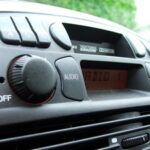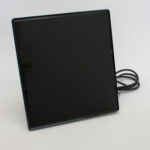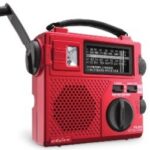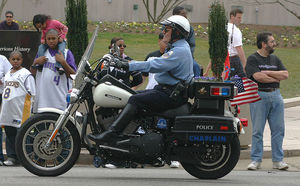The following steps can help solve or diagnose problems with your base, mobile, or handheld Citizen’s Band radio. Keep in mind that this troubleshooting guide is designed for all types of CB radios, as well as both experts and beginners, so some steps may not apply to you.
1. Check to see that all power, microphone, and antenna cables are properly connected. Verify that the squelch control is correctly adjusted.
2. If your CB is powered with AC or DC power, use a different power source if possible, to determine if it is a problem with the power source. If it functions properly using a different power source, you might need to contact an electrician (for base units) or auto repair service (for mobile CBs) to have the outlet fixed. If the adapter has a voltage control, make sure it hasn’t been accidentally set to the wrong voltage level (the correct voltage should be indicated on the radio near the power jack).
3. If the CB is a handheld unit which runs on batteries, make sure they are inserted correctly, test them in a battery tester if possible, and replace them if necessary. If rechargeable batteries are being used, look to see if the unit has a “Ni-Cd/Ni-Mh” switch and make sure it is set for the correct type of battery. It is also possible that the radio’s built-in charger has failed or the rechargeable batteries have worn out.
4. Try using a different channel. If the CB radio is a crystal-based model, it may lack the appropriate crystal for the channel you are trying to receive or transmit on. Crystal-based CB radios include some older base and mobile units, as well as a few relatively-new Radio Shack handheld models. CB crystals are available at eBay.com, usually for under $10 each.
5. If your CB radio has an SSB control, set it to “AM” if you need to communicate on the regular non-SSB channels. According to advancedspecialties.net, reception will be “garbled or distorted” if you attempt listening to SSB channels without setting the clarifier or voice-lock control properly. It also indicates that a “feedback squeel” can be caused by turning a CB radio’s “talkback” feature up too high.
6. Some base and mobile CB radios have a switch marked “CB/P.A.” or “Radio/P.A.”; if your radio has this switch, make sure it is set to “CB” or “Radio.” Also, switch the “Display” switch to “ON” if the radio has one.
7. If the problem is with transmitting, not receiving, an SWR meter can be used to determine the radio’s transmit power. These are offered for about $50 at Radio Shack, but can be purchased less expensively if they have been used. It is not possible to use an SWR meter with some inexpensive handheld CBs which have permanent built-in antennas.
8. If you are using headphones or an external speaker with the CB, disconnect it and use the internal speaker instead; re-connect it if this doesn’t solve the problem. Do the same if it has an internal microphone. You can also try using an external speaker if you are already using the internal speaker, especially if the unit has been dropped recently and/or the internal speaker seems to have a loose connection.
9. Try using a different CB with the same antenna and microphone, to determine if either device is the source of the problem.
10. If your mobile or handheld CB is powered with a DC adapter cable connected to a vehicle’s cigarette lighter, it is possible that the fuse inside the the DC adapter’s plug has blown and needs to be replaced. Also, some CB radios (usually base or mobile units) have their own fuse.
11. Try to find the radio’s manual online if you don’t have it. Some CB manufacturers provide instruction manuals on their websites for free, and your CB might have features or characteristics which are not covered by this troubleshooting guide but would be explained in the manual.
If the problem cannot be solved by following any of the above-mentioned steps or using a different antenna, microphone, or power source, consider having someone repair the radio. The owner’s manual, manufacturer’s website, or a panel on the radio may provide information on repair service.




